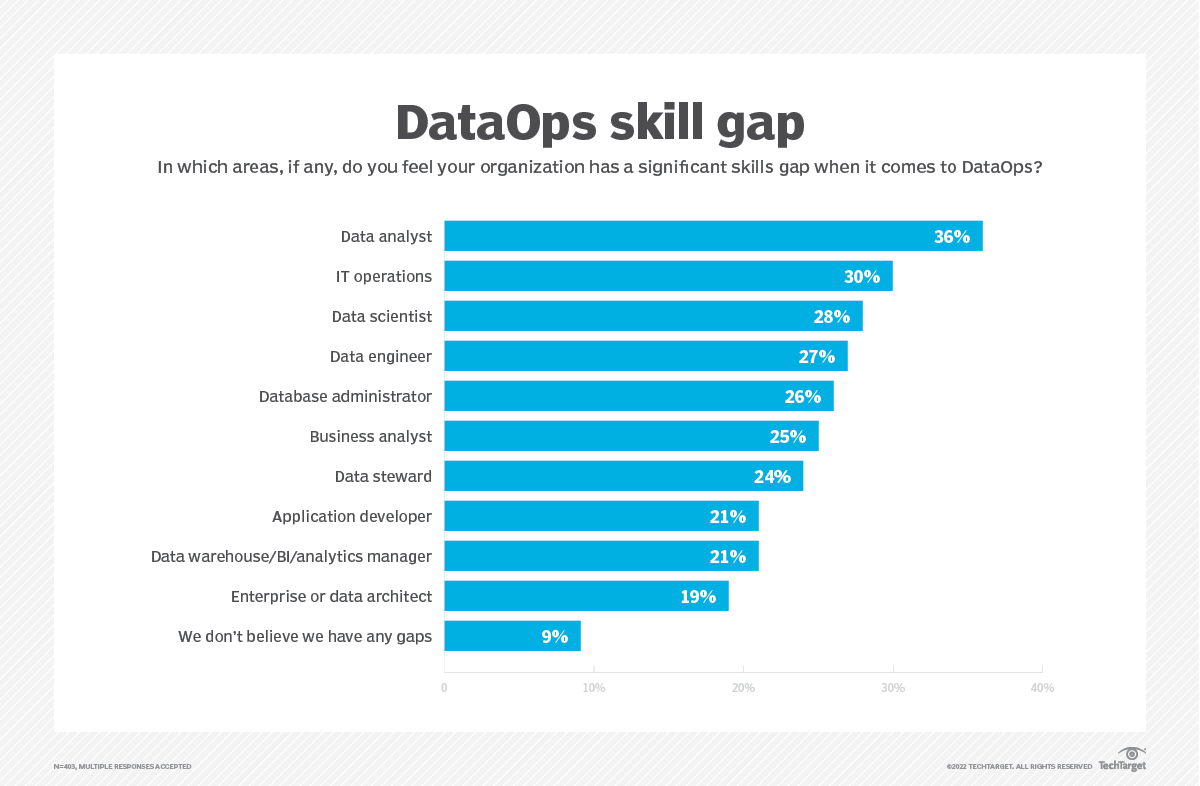Research Objectives
Based on a survey of 742 senior IT decision makers at midmarket and enterprise organizations, the 2023 Technology Spending Intentions Survey analyzes private and public sector technology spending expectations, the business and technology priorities driving those plans, and year-over-year trends in technology adoption and customer preferences. This year’s study from TechTarget’s Enterprise Strategy Group finds that enterprise technology spending will generally slow due to global macroeconomic conditions and the threat of a worldwide recession, but aggressive investments are expected to continue among more digitally transformed organizations.
For more information on this research, please visit www.esg-global.com/2023-technology-spending.

 IT leads the modern data platform, functioning as the conduit, efficiently delivering the correct data to the right users, to empower data-driven decision-making in organizations. Over the last decade, IT vendors have been trying to develop and offer solutions to address the flood of data that companies manage. A modern data platform tries to solve this problem. It’s a combination of interoperable, scalable and modular technologies, working together to deliver an enterprise’s overall data needs.
IT leads the modern data platform, functioning as the conduit, efficiently delivering the correct data to the right users, to empower data-driven decision-making in organizations. Over the last decade, IT vendors have been trying to develop and offer solutions to address the flood of data that companies manage. A modern data platform tries to solve this problem. It’s a combination of interoperable, scalable and modular technologies, working together to deliver an enterprise’s overall data needs. At Big Data London, data quality and intelligence took center stage as companies strive for fast and efficient delivery of quality information — and the vendors to make it happen. Big Data London is the U.K.’s leading data and analytics event, with more than 150 vendors, 300 expert speakers, and an estimated 10,000 attendees coming together to discuss data-driven strategies. During the event, I interviewed seven vendors to get their perspectives and insights on where the market was going, the challenges they saw, and more.
At Big Data London, data quality and intelligence took center stage as companies strive for fast and efficient delivery of quality information — and the vendors to make it happen. Big Data London is the U.K.’s leading data and analytics event, with more than 150 vendors, 300 expert speakers, and an estimated 10,000 attendees coming together to discuss data-driven strategies. During the event, I interviewed seven vendors to get their perspectives and insights on where the market was going, the challenges they saw, and more. Data clean rooms are moving into the mainstream as privacy concerns complicate measuring ad ROI, but the “people problem” poses challenges to data operation success. Data clean rooms are becoming the preeminent tool for brands to better understand the place of digital marketing within the broader marketing ecosystem. In fact, data clean rooms are key for measuring advertising effectiveness, especially as advertisers are relying on cookies less, due to privacy regulations and big tech changes.
Data clean rooms are moving into the mainstream as privacy concerns complicate measuring ad ROI, but the “people problem” poses challenges to data operation success. Data clean rooms are becoming the preeminent tool for brands to better understand the place of digital marketing within the broader marketing ecosystem. In fact, data clean rooms are key for measuring advertising effectiveness, especially as advertisers are relying on cookies less, due to privacy regulations and big tech changes. More than ever, increases in data-centric developer reliance, data sources, and users push developers to understand IT purchasing to provide more value to data. The days of creating data-generating systems for a single operational or analytics application are over. Because of this, developers must become more data-centric to increase business agility and empower data consumers — including internal teams, partners, and customers. Data-centric developers are expanding their sphere of influence on IT purchasing decisions and maximizing the value of data.
More than ever, increases in data-centric developer reliance, data sources, and users push developers to understand IT purchasing to provide more value to data. The days of creating data-generating systems for a single operational or analytics application are over. Because of this, developers must become more data-centric to increase business agility and empower data consumers — including internal teams, partners, and customers. Data-centric developers are expanding their sphere of influence on IT purchasing decisions and maximizing the value of data.